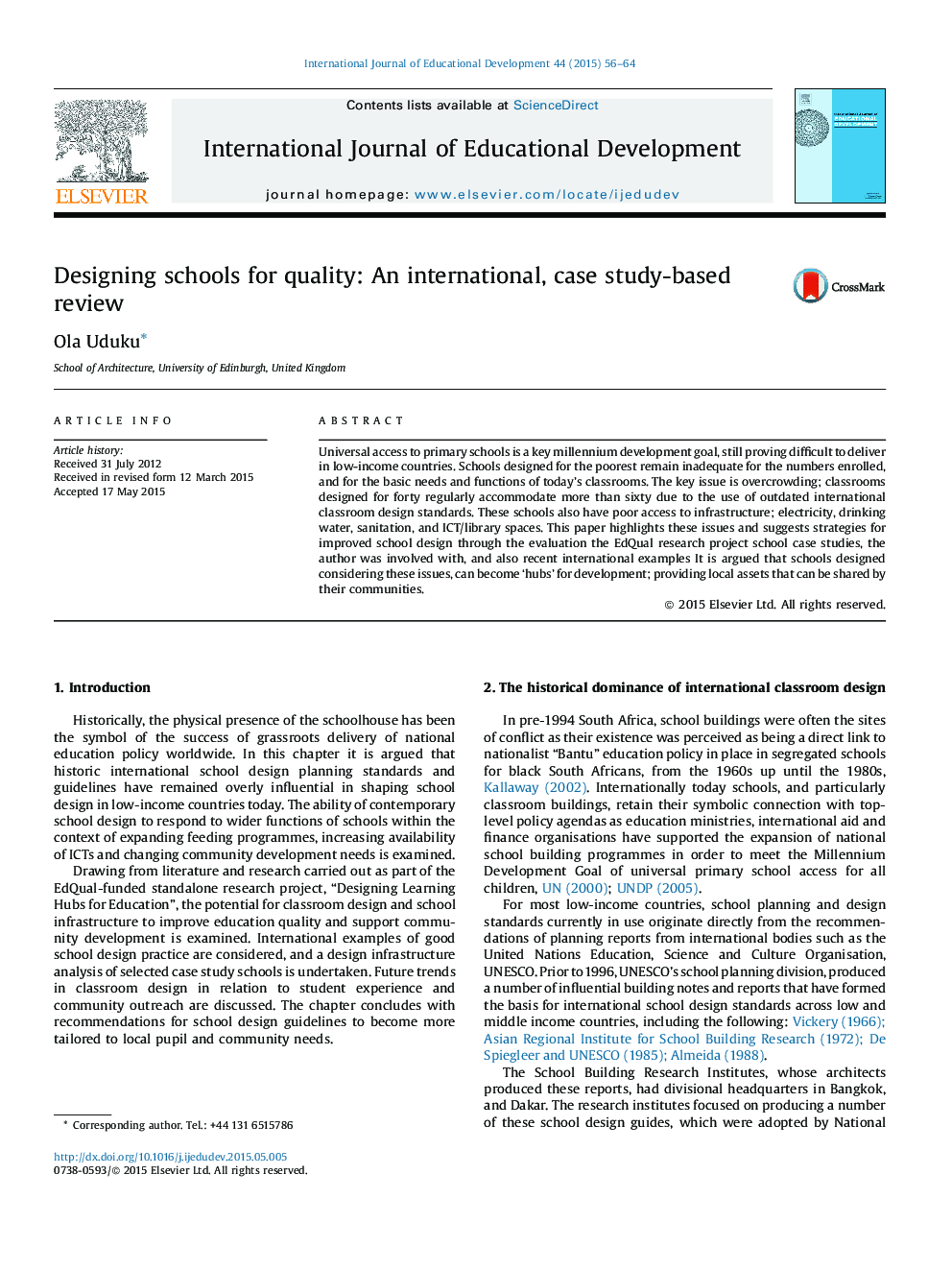| Article ID | Journal | Published Year | Pages | File Type |
|---|---|---|---|---|
| 356056 | International Journal of Educational Development | 2015 | 9 Pages |
•Primary schools designed for the poorest remain inadequate for the numbers enrolled, and for the basic needs and functions of today’s classrooms. The key issue being overcrowding in classrooms.•This is largely due to the use of outdated international design standards for classroom design. This is further affected by poor provision of basic services such as: electricity, drinking water, sanitation, and limited or no ICT/library facilities.•Strategies for improved school design are suggested, using the evaluation of the recently completed EdQual research project school case studies, and also recent international examples.•It concludes that schools designed with adequate access to infrastructure and basic ICT-library facilities, can become ‘hubs’ for development; providing local assets that can be shared by their communities.
Universal access to primary schools is a key millennium development goal, still proving difficult to deliver in low-income countries. Schools designed for the poorest remain inadequate for the numbers enrolled, and for the basic needs and functions of today’s classrooms. The key issue is overcrowding; classrooms designed for forty regularly accommodate more than sixty due to the use of outdated international classroom design standards. These schools also have poor access to infrastructure; electricity, drinking water, sanitation, and ICT/library spaces. This paper highlights these issues and suggests strategies for improved school design through the evaluation the EdQual research project school case studies, the author was involved with, and also recent international examples It is argued that schools designed considering these issues, can become ‘hubs’ for development; providing local assets that can be shared by their communities.
